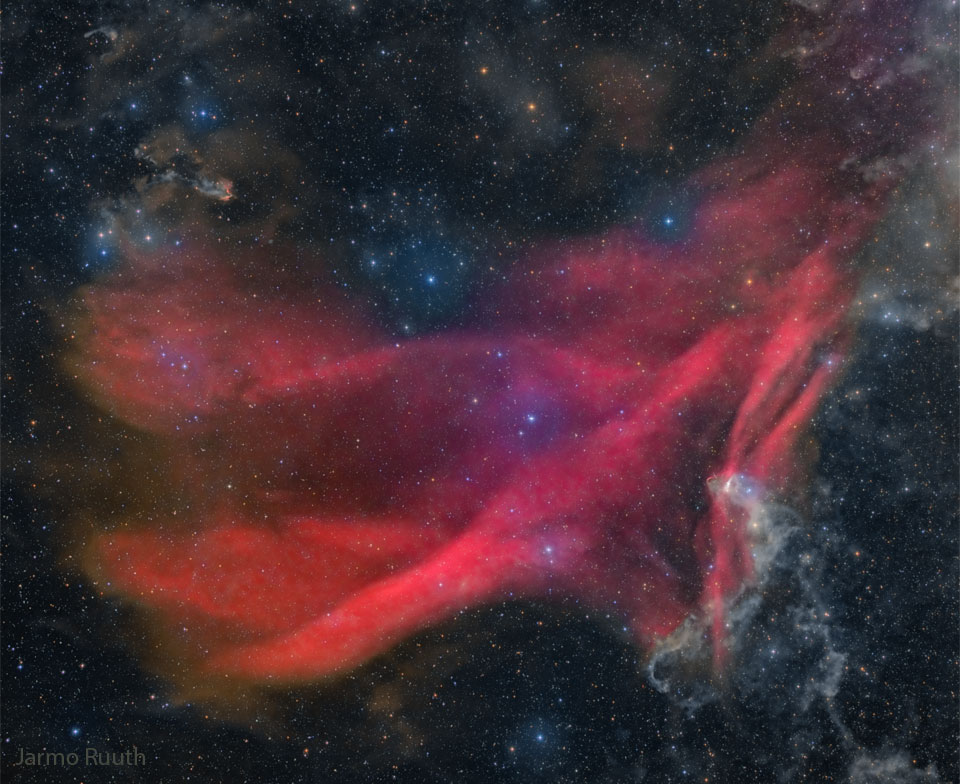2022年9月14日
Waves of the Great Lacerta Nebula
Image Credit & Copyright: Jarmo Ruuth, Telescope Live; Text: Ata Sarajedini (Florida Atlantic U., Astronomy Minute podcast)
Explanation: It is one of the largest nebulas on the sky — why isn’t it better known? Roughly the same angular size as the Andromeda Galaxy, the Great Lacerta Nebula can be found toward the constellation of the Lizard (Lacerta). The emission nebula is difficult to see with wide-field binoculars because it is so faint, but also usually difficult to see with a large telescope because it is so great in angle — spanning about three degrees. The depth, breadth, waves, and beauty of the nebula — cataloged as Sharpless 126 (Sh2-126) — can best be seen and appreciated with a long duration camera exposure. The featured image is one such combined exposure — in this case 10 hours over five different colors and over six nights during this past June and July at the IC Astronomy Observatory in Spain. The hydrogen gas in the Great Lacerta Nebula glows red because it is excited by light from the bright star 10 Lacertae, one of the bright blue stars just above the red-glowing nebula’s center. The stars and nebula are about 1,200 light years distant.
Harvest Full Moon 2022: Notable Submissions to APOD
Tomorrow’s picture: open space
蝎虎座星云的波纹
影像提供与版权: Jarmo Ruuth, Telescope Live; 文稿: Ata Sarajedini (Florida Atlantic U., Astronomy Minute podcast)
说明: 它是天空中最大的星云之一,不过,它为何声名不显?视张角和仙女座星系相当的蝎虎座星云,位在蝎虎座 (Lacerta) 方向。这团发射星云难以用广视野双筒望远镜观看,因为它极为昏暗,而通常大型望远镜也很难观测,因为它的张角非常大,跨度约有3度。编录号为Sharpless 126(Sh2-126)的这团星云之深度、广度、波纹与风采等等,皆是最适合透过长曝光相机影像观测及欣赏的特点。而这幅在今年6月与7月的6个夜晚,摄于西班牙IC天文台,整合了5个不同颜色、总曝光长度为10小时的主题影像,正是足以突显上述这些亮点的影像之一。蝎虎座星云中的氢气之所以会发出红光,则是因为受到明亮泛红星云中上方的蓝色亮星之一、车府增十一(蝎虎座10)的星光之激发。这些恒星和星云距离我们约1,200光年远。
2022年获月: 提交给APOD的值得注意的照片
明日的图片: open space



